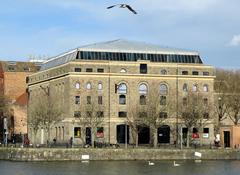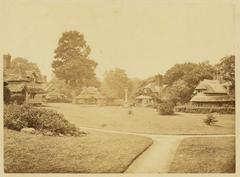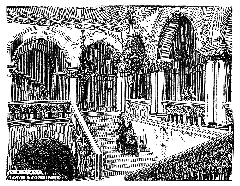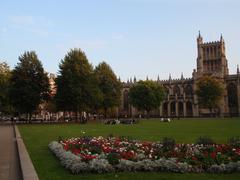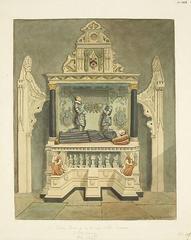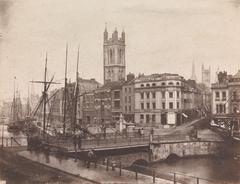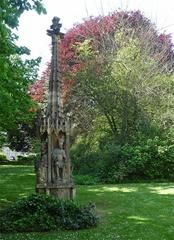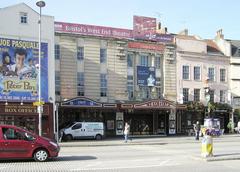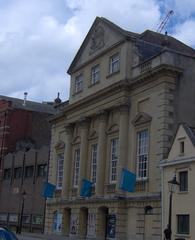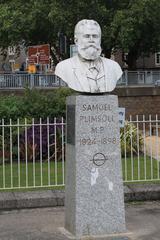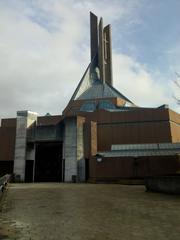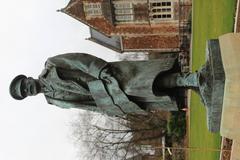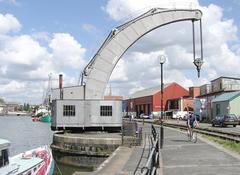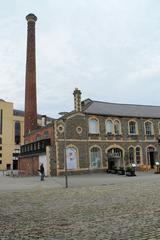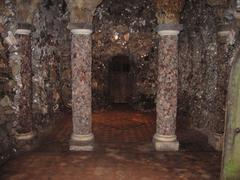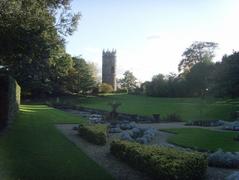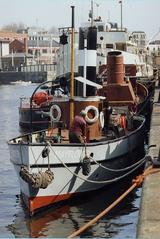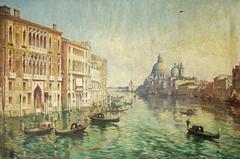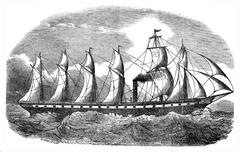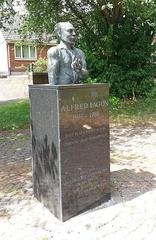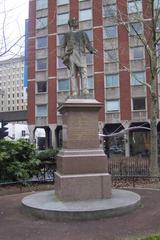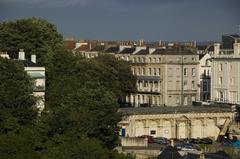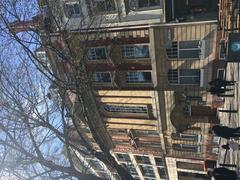
St Mary Le Port Church, Bristol: Visiting Hours, Tickets & Historical Site Guide
Date: 04/07/2025
Introduction
St Mary le Port Church, nestled in the heart of Bristol, is one of the city’s oldest and most evocative historic landmarks. With origins predating the Norman Conquest, the church’s surviving 15th-century tower and atmospheric ruins offer visitors a unique window into Bristol’s Saxon beginnings, medieval growth, and wartime resilience. This comprehensive guide will help you explore St Mary le Port’s history, architecture, visitor information, and its role in the ongoing regeneration of Bristol’s city centre.
Early Origins: Saxon Foundations
Archaeological discoveries indicate that St Mary le Port Church was established as early as the 10th or 11th century, making it nearly as old as the city itself. Excavations in the 1960s revealed Anglo-Saxon masonry and pottery beneath the medieval church, confirming the site’s pre-Norman origins (Wikipedia; ChurchCrawler). Its location likely marked an early focal point for settlement in Bristol, with further evidence suggesting the church was central to the city’s development (ChurchCrawler).
Medieval Development & Urban Significance
During the medieval period, St Mary le Port stood at the intersection of key city streets—Wine Street, Corn Street, High Street, and Broad Street—forming the civic and commercial heart of Bristol (St Mary le Port History). The church evolved through multiple phases of rebuilding and expansion from the 11th to the 16th centuries, reflecting Bristol’s growth and prosperity (Wikipedia). By the late medieval period, the church was surrounded by a warren of narrow streets and timber-framed houses, its presence marked by a projecting clock above Mary le Port Street (ChurchCrawler).
Architectural Features: Perpendicular Gothic Tower
St Mary le Port’s most notable surviving feature is its three-stage 15th-century Perpendicular Gothic tower, built from local Pennant stone and topped with a distinctive Bristol spirelet (Looking at Buildings). The original church included a five-bay nave, north aisle, and narrow chancel, the outlines of which can still be traced among the ruins. Surviving architectural elements include the priest’s door, rood stair base, and north porch foundations (Looking at Buildings). The church’s robust verticality and minimal ornamentation typify Bristol’s late-medieval craftsmanship.
Religious & Social Impact
In the 19th and early 20th centuries, St Mary le Port became a hub for evangelical Anglicanism and Protestant preaching, reflecting the city’s dynamic religious landscape (Wikipedia). The church’s proximity to Bridge Street Independent Chapel led to an unusual overlap of services audible from both buildings—a testament to the area’s vibrant spiritual life (The Archaeologist).
Wartime Destruction & Postwar Change
The Bristol Blitz of November 1940 devastated St Mary le Port, leaving only the iconic tower standing (The Archaeologist). Most parish records were lost, though some survive at the Bristol Archives (Wikipedia). Postwar, the area was redeveloped with office blocks in the 1960s, further obscuring the church ruins (St Mary le Port History). These buildings are now derelict and slated for demolition as part of a major regeneration scheme.
Modern Rediscovery & Conservation
In recent years, renewed interest in Bristol’s medieval heritage and the dereliction of 20th-century office blocks have brought St Mary le Port back into public focus (The Archaeologist). The tower is listed as a Heritage at Risk site, and ambitious plans are underway to restore and integrate it into a revitalized public space (St Mary le Port History; Bristol Post).
Visiting St Mary le Port Church
Hours
The church ruins and surrounding park are open year-round, generally accessible during daylight hours (typically 8:00 AM to dusk, but the park is open 24 hours). For safety and best experience, visit during the day.
Tickets & Entry
There is no charge for entry; no tickets are required to visit the ruins or park.
Accessibility
The park features flat, paved paths suitable for wheelchair users, though the immediate area around the ruins has uneven ground and the tower is closed to the public. Contact Bristol City Council or local tourism offices for detailed accessibility information.
Guided Tours & Information
While there are no regular guided tours dedicated solely to St Mary le Port, the site is included in many walking tours of Bristol’s Old City. Interpretive signage provides historical context. For deeper insight, consult online resources or book a local tour (Visit Bristol).
The Site Today: Layout & Setting
St Mary le Port’s ruins are situated at the edge of Castle Park, framed by derelict mid-20th-century office blocks (St Mary le Port – The Site Today). The site is easily reached from Bristol Temple Meads railway station (15-minute walk) and is close to St Nicholas Market, Wine Street, and the Floating Harbour (Joe Banks).
Notable features include the Perpendicular Gothic tower, traces of the nave and chancel marked by low walls and stone slabs, and surviving medieval elements such as the priest’s door and rood stair (Looking at Buildings).
Redevelopment & Heritage Integration
A major regeneration project, approved in 2021, will restore the church tower, reinstate lost medieval streets, and return part of the site to Castle Park’s green space (St Mary Le Port). These changes aim to reconnect the church with the city’s heritage trail, enhance public amenities, and create new spaces for community events and contemporary culture (Bristol Post; Visit Bristol).
Nearby Attractions
- St Nicholas Market: Renowned for independent shops and food stalls.
- Castle Park: Green space with the ruins of Bristol Castle and St Peter’s Church.
- Bristol Cathedral: A short walk away, featuring stunning Gothic architecture (Wide World Trips).
- The Floating Harbour: Offers boat tours, museums, and waterfront cafés.
- M Shed Museum: Focused on Bristol’s social and industrial history.
Practical Visitor Tips
- Best Time: Spring and summer are pleasant; early mornings and late afternoons offer the best lighting for photography.
- Facilities: No toilets or cafés on site, but nearby in Castle Park and city centre.
- Events: Occasional heritage open days, outdoor performances, and temporary exhibitions are held on site; check local listings for details.
- Safety: The park is open 24 hours, but exercise caution after dark.
- Construction: Redevelopment may temporarily restrict access; check Bristol Post or Bristol City Council updates before visiting.
Frequently Asked Questions (FAQ)
Q: What are the visiting hours?
A: The park and ruins are open 24 hours, but daylight hours are recommended for visits.
Q: Is there an entrance fee?
A: No, entry is free.
Q: Are guided tours available?
A: Many walking tours of Bristol’s Old City include St Mary le Port; check with local providers.
Q: Is the site accessible for wheelchair users?
A: Park paths are flat and paved; the ruins themselves have uneven surfaces.
Q: Are there restrooms on site?
A: No, but public toilets are available in Castle Park.
Q: Can I take photographs?
A: Yes, the site is popular with photographers, especially at golden hour.
Visual Resources
For images, maps, and virtual tours, visit the official St Mary le Port website and Visit Bristol. Use descriptive alt text such as “St Mary le Port Church ruins Bristol” for accessibility.
Related Reading
- St Mary le Port Church, Wikipedia
- ChurchCrawler: St Mary le Port
- Uncovering the Hidden History of St Mary le Port, The Archaeologist
- Looking at Buildings: St Mary le Port
- St Mary le Port – The Site Today
- Joe Banks: Bristol’s Planning and St Mary le Port
- Bristol Post: Regeneration News
- St Mary Le Port: Restoration Project
- Wide World Trips: Bristol Cathedral
Conclusion & Call to Action
St Mary le Port Church is a testament to Bristol’s enduring spirit—bridging Saxon origins, medieval grandeur, and modern resilience. Its ruins offer a poignant visitor experience, surrounded by a city that is continuously reimagining its past for the future. Whether you are a history buff, photographer, or casual visitor, St Mary le Port is a must-see on any Bristol itinerary.
For up-to-date information on guided tours, special events, and heritage news, download the Audiala app, visit official tourism sites, and follow local heritage organizations. Immerse yourself in the stories that have shaped Bristol for over a thousand years.





